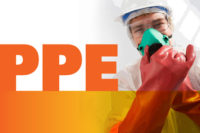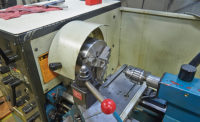Yes, attention control is a critical component in training system, in which we focus on practical methods for:
- Becoming more ongoingly aware of off- (nondominant) hand. For example, we've found that many right-handed people have limited positional awareness of their left hand. Right-handed people account for approximately 90% of the population by most estimates (e.g. Dr. Stanley Coren, The Left-handed Syndrome)
- Identifying own attention default habits to see which might potentially contribute to risk of hand injuries; how to strengthen personal attentional control "deficits"
- How to maintain attention when there is other competing input (not allow attention to get pulled away), especially while doing tasks that are at high risk for hand injuries.
- How to quickly regain attention when distracted
- How to make several small adjustments in how you quickly think about moving arms and hands that make significant upgrades in finger-hand-wrist-arm safety.
- How to quickly self-monitor attention as well as adjusting body position that affects hands. E.g. foot position affects balance - and when a person is off balance, the natural tendency is to put a hand out (often in less-than-ideal place) to brace themselves. We also focus on methods for thinking through how to safely brace yourself when needed for maximum efficiency and safety.
- Most important, methods for moving the above (and much more) from "think about it, remember it" to baseline action defaults. Our thought is that as many times as people use their hands during the day there is no realistic way anyone can be conscious of every single daily finger or hand movement. Even when people learn more effective methods (and this is debatable from what we've seen), to truly make a significant difference, these skills have to become part of background attention, embedded into our automatic pilot programs. This is similar to not having to think about how to balance on two feet, even when in a heated.
- Noticing potentially building hand stressors (from overuse, cold, vibration, etc) at an early a level as possible. Then taking appropriate steps to head this off before damage occurs (or at very least to minimize negative impacts).
Robert Pater is director of Portland Oregon-based Strategic Safety Associates (www.movesmart.com). Attention control is a critical component in their HandSMART® training system. Their MoveSMART® system has been employed by companies worldwide. Robert can be reached at: (503) 977-2094.



